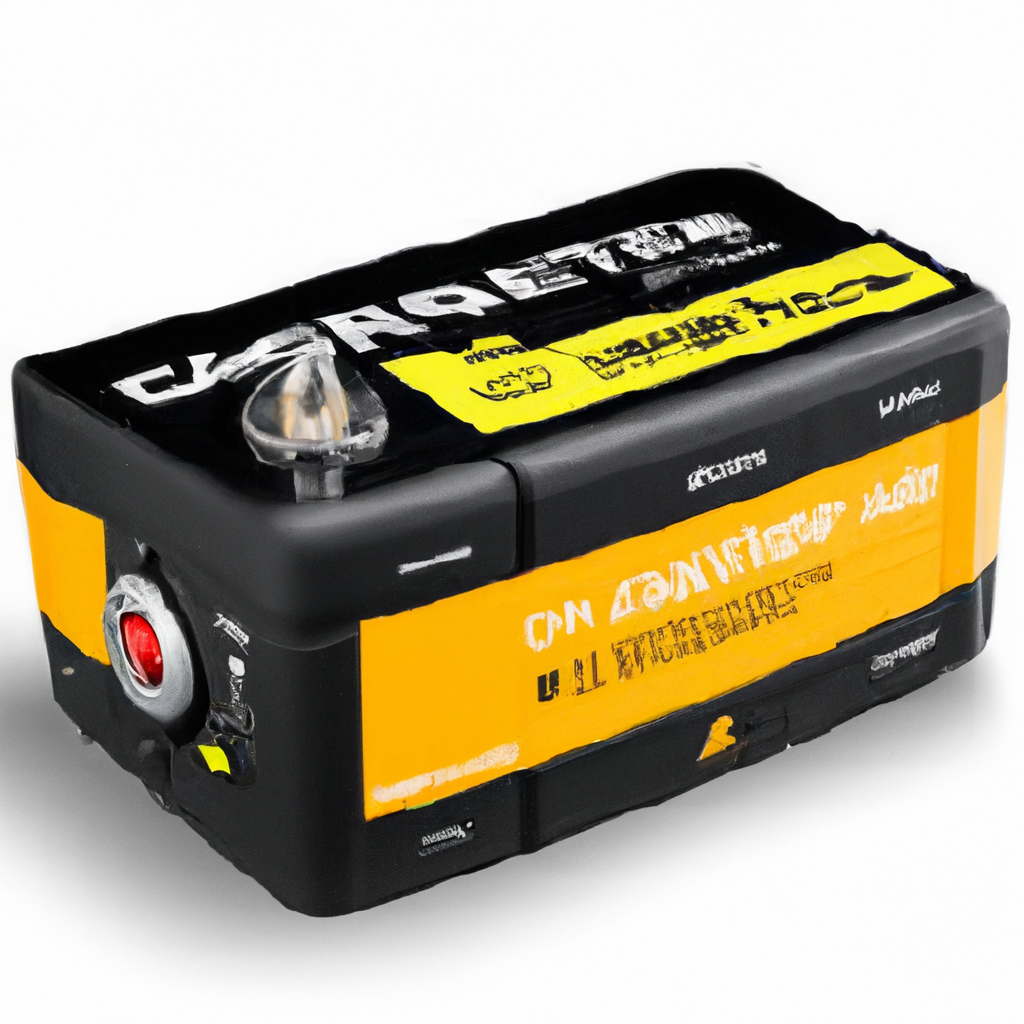So you’ve just purchased your new electric bike and you’re excited to hit the road or trail. But before you can start enjoying the thrill of riding an e-bike, there’s one important step you need to take: charging the battery for the first time. In this guide, we’ll break down the key steps and considerations for properly caring for and charging your e-bike battery. Whether you’re a complete beginner or just need a refresher, this article will give you the knowledge and confidence you need to ensure your e-bike battery lasts for the long haul.
Understanding E-Bike Batteries
E-bike batteries are a crucial component of electric bikes, providing the power needed to propel you forward. Understanding the different types of e-bike batteries available will help you make an informed decision when purchasing and caring for your battery.
Types of E-Bike Batteries
There are several types of e-bike batteries commonly used in the market. The most popular ones include lithium-ion (Li-ion), lithium-polymer (LiPo), and nickel-metal hydride (NiMH) batteries.
Lithium-ion batteries are the most commonly used type due to their high energy density, light weight, and long cycle life. They are also less prone to the memory effect, unlike nickel-metal hydride batteries.
Lithium-polymer batteries are similar to lithium-ion batteries, but they are more flexible, allowing manufacturers to create custom shapes and sizes. They also have a lower risk of thermal runaway, making them safer to use.
Nickel-metal hydride batteries, on the other hand, are less common for e-bikes nowadays due to their heavier weight and shorter cycle life compared to lithium batteries.
Battery Capacity and Range
The battery capacity is an important consideration when choosing an e-bike. It refers to the amount of energy the battery can store, usually measured in watt-hours (Wh). Higher capacity batteries will generally provide a longer range, allowing you to ride further without needing to recharge.
However, it’s essential to note that the range of an e-bike battery can vary depending on various factors, including the weight of the rider, terrain, level of pedal assist, and weather conditions. It’s always a good idea to consult the manufacturer’s specifications to get an estimate of the range you can expect from your battery.
Battery Voltage and Power
E-bike batteries are available in different voltage options, typically ranging from 24V to 52V. The voltage directly affects the power output of the motor, with higher voltage batteries providing more power and torque.
When choosing a battery voltage, it’s crucial to consider the motor’s requirements and your desired riding experience. Higher voltage batteries are often preferred for off-road or hilly terrains, while lower voltage batteries may be suitable for casual city commuting.
Battery Life Expectancy
The lifespan of an e-bike battery varies depending on several factors, including the chemistry of the battery, how it is used, and how well it is maintained. On average, e-bike batteries can last between 2 to 7 years.
To maximize the lifespan of your battery, it’s essential to follow proper charging and maintenance practices. Avoid deep discharging or overcharging the battery, as these can accelerate its degradation. Regular inspections and cleaning, as well as avoiding extreme temperatures and water exposure, can also help prolong the battery’s life.
Preparation for First Time Charging
Before charging your e-bike battery for the first time, there are a few important steps to take to ensure a safe and effective charging process.
Reading the Manual
To familiarize yourself with your specific e-bike and battery model, it’s crucial to read the manufacturer’s manual. The manual provides detailed instructions on charging procedures, safety precautions, and any specific recommendations or requirements for your battery.
Checking the Battery Status
Before charging, it’s important to check the battery status. Ensure that the battery is not physically damaged, such as cracked or bulging. If you notice any abnormalities, it’s best to contact the manufacturer or a professional for further assistance.
Inspecting the Charger
Inspect the charger for any visible damage or signs of wear. Ensure that the charger’s cables are intact, without fraying or exposed wires. Using a damaged charger can be dangerous, so it’s important to replace it if necessary. Only use chargers specifically designed for your e-bike battery model.
Choosing the Charging Location
Selecting the proper charging location is crucial for safety and convenience. Ensure that the charging area is well-ventilated, away from flammable materials, and not exposed to extreme temperatures or direct sunlight. Choosing a location near a power outlet and with a flat surface will also make the charging process more convenient.

Charging Process
Properly charging your e-bike battery is essential for maintaining its performance and prolonging its lifespan. Understanding the charging time, plug-in procedure, safety tips, and monitoring progress will help ensure a smooth and efficient charging process.
Charging Time
The charging time for e-bike batteries can vary depending on the battery capacity, charger power output, and the current battery charge level. As a general guideline, most e-bike batteries take around 4 to 6 hours to fully charge. However, it’s important to consult the manufacturer’s specifications for accurate charging time estimates.
Plug-in Procedure
To begin the charging process, locate the charging port on your e-bike battery. Ensure that the charger is in proper working condition and that the power outlet is compatible with the charger. Carefully insert the charger plug into the charging port, ensuring a secure connection.
Charging Safety Tips
While charging your e-bike battery, it’s important to follow some safety tips to minimize any potential risks. Avoid charging the battery unattended, especially overnight or for an extended period. Keep the charging area clean and free from any objects that may obstruct airflow. Never cover or place anything on top of the charger or battery during the charging process.
Monitoring the Charging Progress
During the charging process, it’s a good idea to periodically check the charger and battery for any signs of abnormal behavior. If you notice any excessive heat, unusual smells, or unusual noises, immediately stop charging and disconnect the charger from the power outlet. Consult the manufacturer or a professional for further assistance.
Optimizing Battery Performance
To ensure optimal performance and longevity of your e-bike battery, there are several key factors to consider, such as avoiding overcharging and undercharging, temperature considerations, and proper storage techniques.
Avoiding Overcharging
Overcharging your e-bike battery can negatively impact its lifespan and performance. Once the battery reaches full charge, it’s important to disconnect it from the charger promptly. Continuously leaving the battery connected to the charger, especially when fully charged, can cause stress on the battery cells and shorten its overall lifespan.
Dealing with Undercharging
Undercharging your e-bike battery can limit its capacity and range. It’s essential to fully charge the battery before each ride, especially if you plan to go on long journeys. Regularly monitoring the battery’s charge level and ensuring it is fully charged will help maintain optimal performance.
Temperature Considerations
Extreme temperatures can affect the performance and lifespan of your e-bike battery. Avoid exposing the battery to extremely hot or cold environments, as this can accelerate its degradation. If you store your e-bike in a cold environment, allow the battery to warm up to room temperature before charging.
Storing the Battery Properly
If you need to store your e-bike battery for an extended period, it’s important to follow proper storage guidelines. Ensure that the battery is charged to around 50% before storage. Store the battery in a cool, dry place, away from direct sunlight and extreme temperatures. It’s also recommended to periodically check the battery charge level and recharge it if necessary during storage.

Battery Maintenance
Regular maintenance is key to ensuring the longevity and performance of your e-bike battery. Following these simple steps will help keep your battery in top condition.
Clean and Dry Battery
Regularly inspect and clean your e-bike battery to remove any dirt, dust, or debris. Use a non-abrasive cloth or sponge and mild soapy water to gently wipe down the exterior of the battery. Ensure that the battery is completely dry before reconnecting it to the e-bike.
Regular Inspections
Periodically inspect your e-bike battery for any signs of physical damage or abnormalities. Check for cracks, bulging, or any other visible signs of wear. If you notice any issues, it’s best to consult the manufacturer or a professional for further assessment and assistance.
Avoiding Extreme Temperatures
Extreme temperatures, both hot and cold, can have a detrimental effect on your e-bike battery. Avoid exposing the battery to direct sunlight, extreme heat, or freezing temperatures. If you live in an area with extreme weather conditions, consider storing your e-bike indoors or in a temperature-controlled environment.
Avoiding Water Exposure
Water exposure can cause significant damage to your e-bike battery. Avoid riding in heavy rain or submerging the battery in water. If you do encounter wet conditions, ensure that the battery and its connections are properly dried before charging or using the e-bike.
Troubleshooting Charging Issues
While e-bike batteries are generally reliable, you may encounter occasional charging issues. Knowing how to troubleshoot common problems, check connections, verify the charger, and seek professional assistance when necessary will help you address any charging issues effectively.
Common Charging Problems
Some common charging issues include the charger not powering on, the battery not charging, or the charger producing unusual sounds or smells during charging. If you encounter any of these problems, it’s important to investigate further to identify the root cause.
Checking Connections
Before assuming a problem with the battery or charger, it’s crucial to check the connections. Ensure that the charger is securely plugged into the power outlet and the battery charging port. Verify that there are no loose or damaged cables or connections.
Verifying the Charger
If you suspect an issue with the charger, it’s important to verify its functionality. Try using a different charger, if available, to see if the problem persists. If the battery charges successfully with a different charger, it may indicate a faulty charger that needs to be replaced.
Seeking Professional Assistance
If you are unable to resolve the charging issue or suspect a problem with the battery, it’s recommended to seek professional assistance. Contact the e-bike manufacturer or a qualified technician who can diagnose and repair any battery-related problems.

Tips for Prolonging Battery Life
Prolonging the life of your e-bike battery is essential for getting the most out of your electric bike. Here are some tips to help maximize battery performance and longevity.
Using the Correct Charger
Using the correct charger for your e-bike battery model is crucial for optimal charging and battery performance. Avoid using chargers not specifically designed for your battery, as they may not provide the correct voltage or charging algorithm, potentially causing damage to the battery cells.
Avoiding Deep Discharging
Deep discharging your e-bike battery regularly can have a negative impact on its lifespan. Try to avoid letting the battery charge level drop below 20% before recharging it. Regularly recharge the battery to keep it within a healthy charge range and maximize its capacity and longevity.
Regular Battery Usage
While it may be tempting to leave your e-bike battery fully charged and unused for an extended period, regular battery usage is actually beneficial. Keep your battery active by going for short rides or using the e-bike regularly. This helps ensure the battery cells remain healthy and maintains their performance over time.
Maintaining Optimal Tire Pressure
Maintaining proper tire pressure is not only important for a smooth ride but also for optimizing battery performance. Underinflated tires can increase the rolling resistance, putting more strain on the motor and subsequently draining the battery faster. Regularly check and inflate the tires to the recommended pressure to maximize battery efficiency.
Frequently Asked Questions
To address some common queries about e-bike batteries, let’s dive into a few frequently asked questions.
Can I Charge the Battery Overnight?
While some modern e-bike batteries have advanced charging systems that prevent overcharging, it’s generally recommended to avoid charging the battery overnight. Continuously leaving the battery connected to the charger for an extended period can cause unnecessary stress on the battery cells and potentially affect its lifespan. It’s best to refer to the manufacturer’s recommendations regarding charging duration.
What Happens if I Use a Different Charger?
Using a charger that is not specifically designed for your e-bike battery can have adverse effects. Different chargers may not provide the correct voltage or charging algorithm required for your battery, potentially causing damage or reducing its performance. It’s crucial to always use the charger that comes with your e-bike or a compatible charger recommended by the manufacturer.
How Often Should I Charge the Battery?
The frequency of charging your e-bike battery depends on your usage patterns. It’s generally recommended to charge the battery after each ride or when the battery charge level drops below 20%. Regularly maintaining the battery charge within a healthy range will help prolong its lifespan and ensure optimal performance.
Can I Still Ride the E-Bike while Charging?
It is generally not recommended to ride your e-bike while charging the battery. Charging and discharging the battery simultaneously can generate excess heat and put strain on the battery cells, potentially leading to performance issues or damage. It’s best to let the battery charge fully before resuming your ride.

Conclusion
Understanding the complexities of e-bike batteries is essential for maximizing their performance, lifespan, and your overall riding experience. By familiarizing yourself with the different types of batteries, proper charging procedures, maintenance practices, and troubleshooting techniques, you can ensure that your e-bike battery remains in excellent condition for years to come. Remember to always refer to the manufacturer’s guidelines and seek professional assistance whenever needed. Happy riding!




